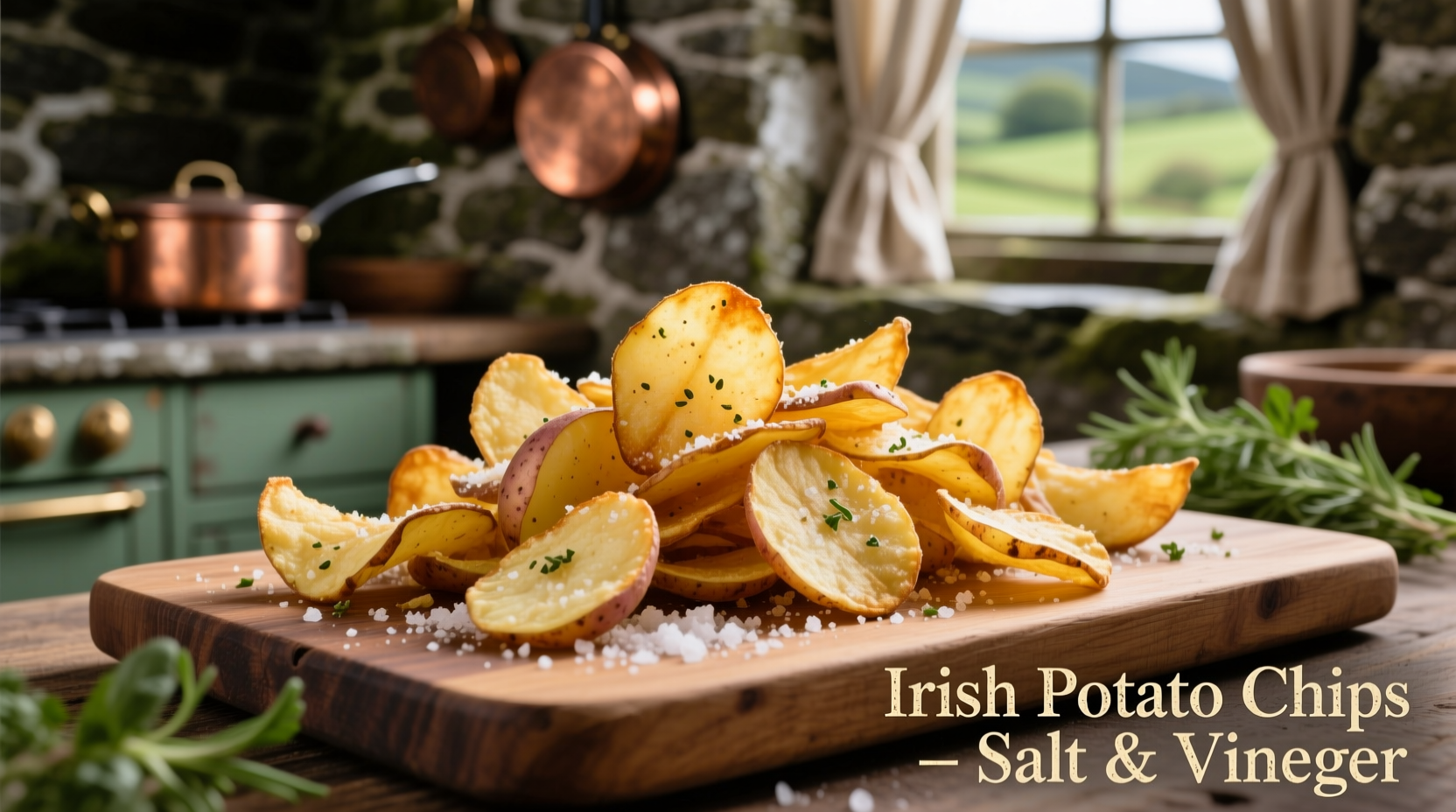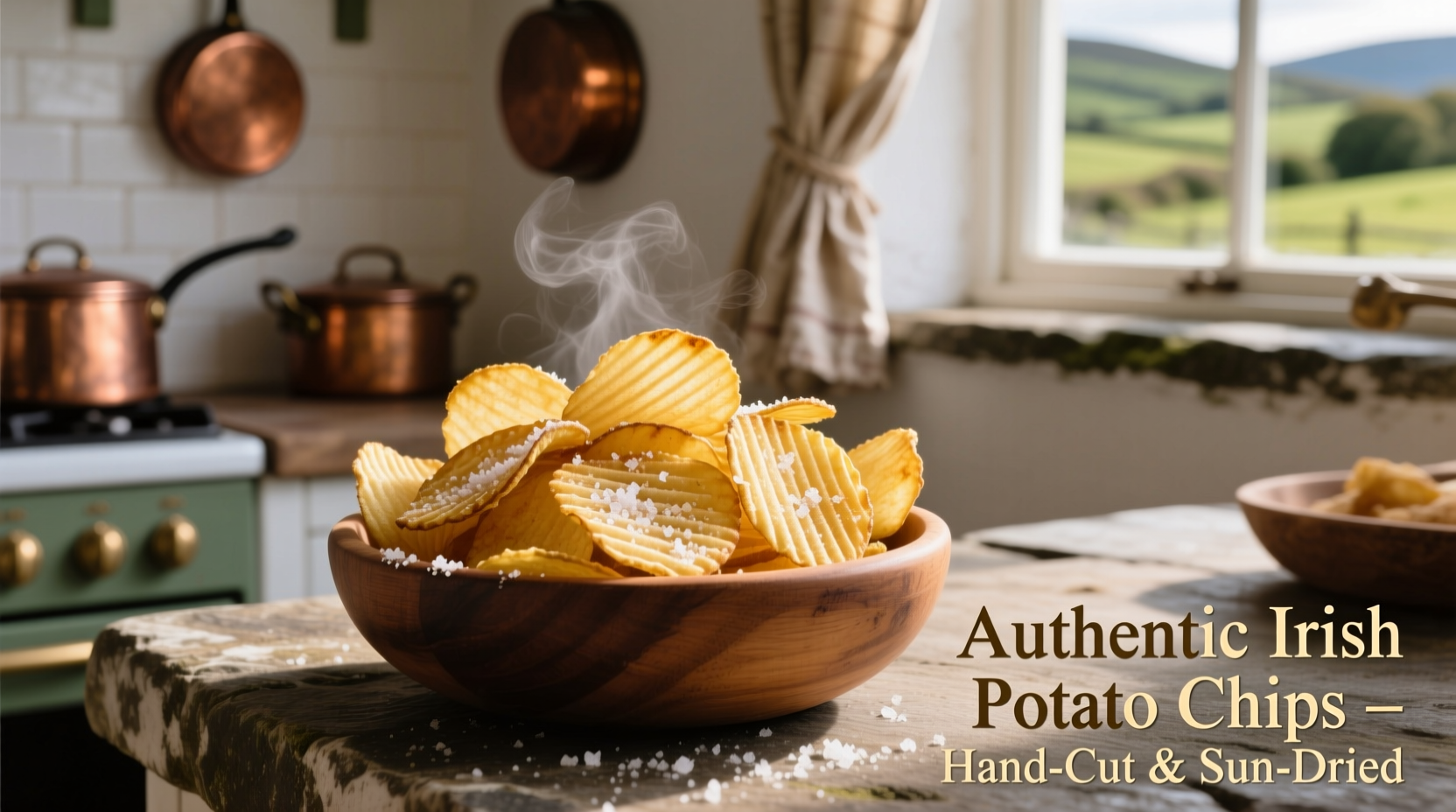What Truly Defines Authentic Irish Potato Chips
When you reach for a bag of Irish potato chips, you're experiencing a snack deeply woven into Ireland's culinary identity. Unlike mass-produced varieties elsewhere, authentic Irish crisps showcase distinctive characteristics that reflect Ireland's agricultural heritage and taste preferences.
Irish potato chips typically use locally grown potatoes such as Rooster, Kerr's Pink, and Irish Lumper varieties. These potatoes have the perfect balance of starch and moisture for crisp production, yielding a texture that's substantial yet delicate. The traditional Irish approach favors thicker cuts than American-style chips, creating a satisfying crunch that holds up to bold seasonings.
The Cultural Significance of Crisps in Ireland
In Ireland, potato chips aren't just a snack—they're a cultural institution. The story of Irish potato chips begins with Tayto, founded by Joe 'Spud' Murphy in 1954 in Dublin. Murphy revolutionized snack food by becoming the first company worldwide to add seasoning directly to the chip during production, rather than selling dry seasoning packets separately.
Evolution of Irish Potato Chips
- 1954: Tayto introduces the world's first seasoned crisps with Cheese & Onion flavor
- 1956: Salt & Vinegar flavor debuts, becoming Ireland's most popular crisp variety
- 1970s: Regional Irish brands emerge, each developing local flavor specialties
- 1990s: Irish crisps gain international recognition for their distinctive taste profiles
- 2000s-Present: Craft crisp makers revive traditional production methods with locally sourced ingredients
This innovation sparked what Irish people call the "Crisp Revolution," transforming how seasonings interact with the potato base. Today, walking into any Irish pub, grocery store, or convenience shop, you'll find crisps holding a place of honor alongside other national staples.
Key Characteristics That Set Irish Chips Apart
Several elements combine to create the distinctive Irish potato chip experience:
- Potato Selection: Irish manufacturers prioritize locally grown varieties known for their flavor and texture
- Traditional Seasoning Methods: Dry seasoning applied immediately after frying while chips are still warm
- Bold Flavor Profiles: Salt & Vinegar remains the undisputed favorite, followed by Cheese & Onion
- Thicker Cut: Creates a heartier crunch compared to thinner American-style chips
- Local Oil Preferences: Many traditional Irish brands use sunflower or rapeseed oil
| Characteristic | Irish Potato Chips | American Potato Chips | British Crisps |
|---|---|---|---|
| Primary Potato Variety | Rooster, Kerr's Pink | Russet Burbank | Maris Piper |
| Standard Cut Thickness | Medium-thick (1.8-2.2mm) | Thin (1.2-1.5mm) | Medium (1.6-1.9mm) |
| Top Flavor | Salt & Vinegar (65% market share) | Sour Cream & Onion | Salt & Vinegar |
| Traditional Oil | Sunflower/Rapeseed | Corn/Sunflower | Palm/Sunflower |
| Seasoning Application | Directly on warm chips | Post-cooling application | Directly on warm chips |
Understanding Regional Flavor Preferences
Irish crisp preferences reveal fascinating cultural insights. According to a 2023 Bord Bia (Irish Food Board) consumer survey, 65% of Irish crisp consumers consistently choose Salt & Vinegar, making it the dominant flavor by a significant margin. This preference differs notably from American markets where barbecue and sour cream flavors lead.
The enduring popularity of Salt & Vinegar in Ireland reflects the nation's taste for bold, tangy flavors that complement traditional Irish pub fare. Cheese & Onion follows as the second most popular choice, while specialty flavors like Prawn Cocktail and Smoky Bacon have smaller but dedicated followings.
Tayto: Ireland's Crisp Icon
No discussion of Irish potato chips is complete without mentioning Tayto, Ireland's most beloved crisp brand. Founded in 1954, Tayto holds a special place in Irish culture that extends far beyond snack food. The company's slogan "Sure, it's Tayto" has become part of the Irish vernacular, expressing satisfaction with something authentically Irish.
Tayto's original factory in Ashbourne, County Meath, has become something of a pilgrimage site for crisp enthusiasts. The brand's cultural significance was recognized when Tayto was included in the National Museum of Ireland's collection of objects representing modern Irish life.

Finding Authentic Irish Potato Chips
While Tayto remains the gold standard, several other Irish crisp manufacturers produce excellent products worth seeking out:
- Hunky Dorys: Known for innovative flavors while maintaining traditional production methods
- King Crisps: Family-owned company emphasizing locally sourced Irish potatoes
- Cavanagh Crisps: Artisan producer using heritage potato varieties
- Lays Irish Market: International brand's specifically formulated Irish version
When searching for authentic Irish potato chips outside Ireland, look for products specifically labeled as "Irish Market" versions. Many international brands produce different formulations for the Irish market that better match local taste preferences.
Practical Tips for Enjoying Irish-Style Potato Chips
Whether you've found authentic Irish crisps or want to recreate the experience:
- Pair with traditional Irish beverages: Irish stout or craft cider complements the bold flavors perfectly
- Check the ingredient list: Authentic Irish crisps list specific Irish potato varieties
- Store properly: Keep unopened bags in a cool, dark place to maintain optimal crunch
- Try the classic pub pairing: Enjoy Salt & Vinegar crisps with a cold pint for the authentic experience
Contextual Considerations for Irish Potato Chips
Understanding when Irish potato chips shine helps appreciate their unique role in food culture:
- Best enjoyed fresh: Unlike some snack foods, crisps lose their optimal texture within days of opening
- Pub culture staple: Integral to the casual Irish pub experience, often served alongside drinks
- Not typically a cooking ingredient: Unlike American chips sometimes used in recipes, Irish crisps are primarily enjoyed as standalone snacks
- Seasonal variations: Limited edition flavors often appear around St. Patrick's Day and summer festivals
Where Irish Potato Chips Fit in Global Snack Culture
Irish crisps occupy a distinctive space in the global snack landscape. While American chips often emphasize extreme flavors and novelty, and British crisps maintain their own traditions, Irish potato chips strike a balance between bold flavor and potato-forward simplicity.
The growing craft food movement has sparked renewed interest in traditional Irish crisp production methods, with small-batch producers focusing on heritage potato varieties and locally sourced ingredients. This trend aligns with Ireland's broader culinary renaissance that celebrates traditional foods with modern sensibilities.











 浙公网安备
33010002000092号
浙公网安备
33010002000092号 浙B2-20120091-4
浙B2-20120091-4